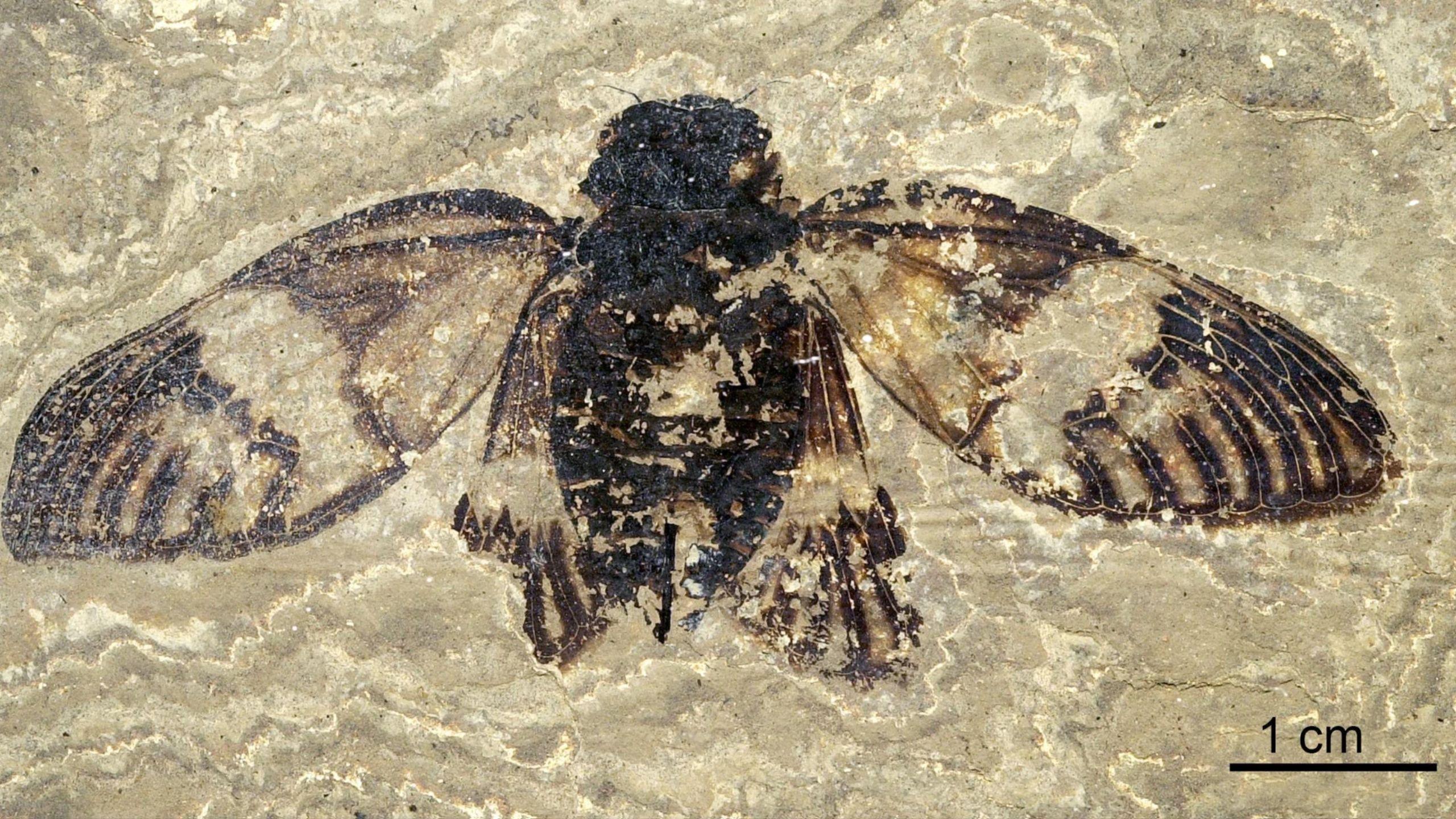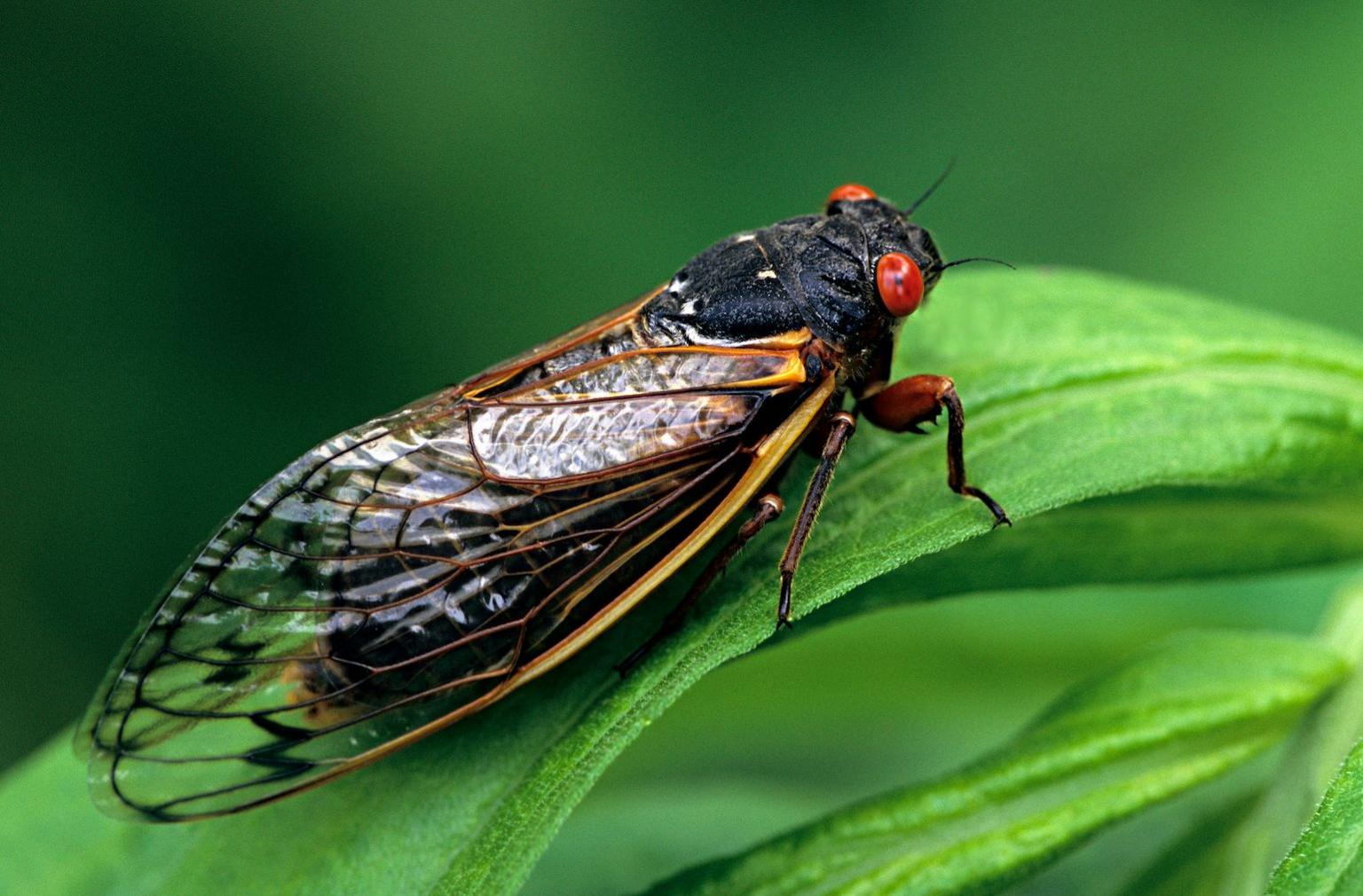Incredibly well preserved cicada fossil discovered in Germany

There are billions of cicadas but there are very few fossils of the species, so this discovery is a huge moment for the scientists studying the insects
- Published
Scientists in Germany have discovered an almost perfectly preserved fossil of a cicada, thought to be around 47 million years old.
Its age makes it one of the oldest known true cicadas ever discovered in Europe and the first of its kind found in the Messel Pit - a UNESCO World Heritage site near Frankfurt, known for its amazing fossil discoveries.
"Every new fossil find from the Messel Pit is of great scientific importance", says Dr Sonja Wedmann, a paleoentomologist (the study of insect fossils), at Senckenberg Research Institute and Natural History Museum Frankfurt.
And this one is no exception.
Cicadas are a group of cricket-like insects, famous for their loud chirp, and are most commonly found in the Americas.
They're among some of the longest-living insects in the world, some species reaching around 17 years old, but spend much of their time living underground feeding on tree sap and roots.
- Published8 January 2024
- Published17 May 2021
- Published14 May 2024

The Brood X cicadas are famous for the incredible level of noise they make to attract a partner - similar to that of a motorcycle
This fossil is so well preserved, it has enabled the team to study the species in much more depth than ever before.
It is also helps them understand how the cicada has evolved since the Eocene period, between around 33.9 million and 56 million years ago.
This cicada, named Eoplatypleura messelensis, measures about 2.65 cm in body length and has a wingspan of 6.82 cm.
Dr Hui Jiang, who was the lead author on the published study of the insect, says the cicadas' size and intricate wing pattern could have been hugely significant for their survival.
"These patterns are similar to those of modern cicada species of the Platypleurini group, which live in woods and scrubland. Given the subtropical vegetation in the Messel area around 47 million years ago, the coloration could have fulfilled a similar ecological function – for example as camouflage."
